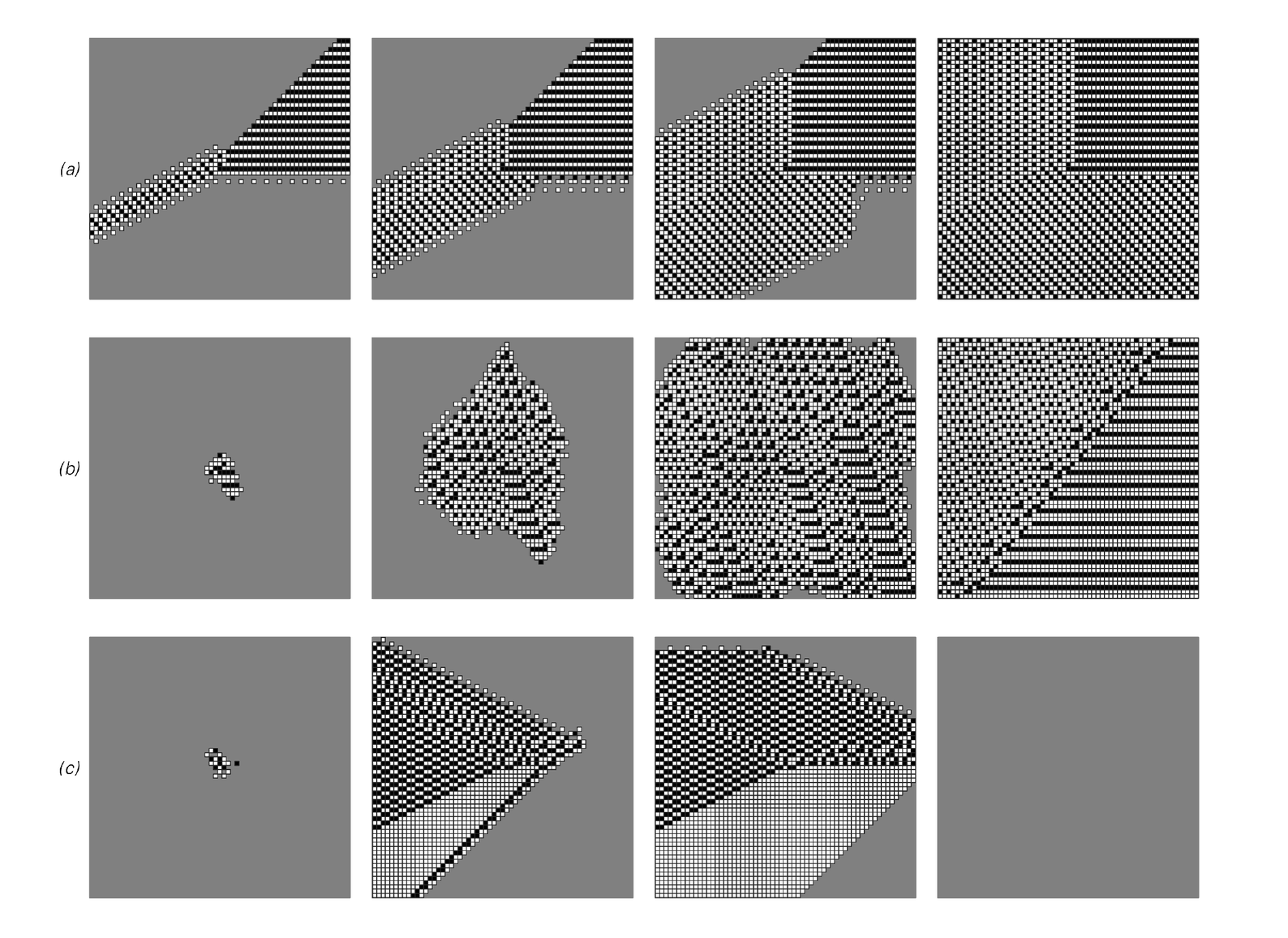But if one systematically examines possible constraints in the order shown on pages 214 and 215, then it turns out that after examining more than 18 million of them, one finally discovers the system shown on the facing page. And in this system, unlike all others before it, no repetitive pattern is possible; the only pattern that satisfies the constraint is the non-repetitive nested pattern shown in the picture.
After testing millions of constraints, and tens of billions of candidate patterns, therefore, it is finally possible to establish that a system based on simple constraints of the type discussed here can be forced to exhibit behavior more complex than pure repetition.

Stages in finding patterns that satisfy constraints (a) 4670324, (b) 373384574, and (c) 387520105. Gray is used to indicate cells whose colors have not yet been determined. The first stage shown in each case corresponds to cells whose colors can be deduced immediately from the presence of a particular template at the center. In case (a) choices for additional cells can be made straightforwardly, and an infinite regular pattern can be built up without any backtracking. In case (b), many choices for additional cells have to be tried, with much backtracking, and in the end the automatic procedure fails to find a repetitive pattern. Nevertheless, as the last stage demonstrates, a repetitive pattern does in fact exist. In case (c), the automatic procedure finds a fairly large and almost regular pattern that satisfies the constraints, but in this case it turns out that no infinite pattern exists.



